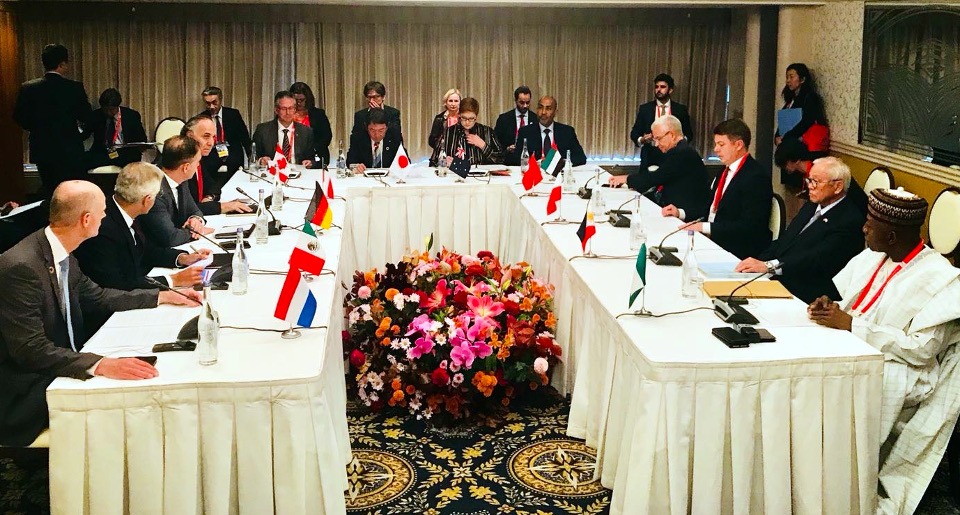Australia’s Role in the Evolving Nuclear Arms Control Landscape
It has been seven years since the drafting of the Treaty on the Prohibition of Nuclear Weapons (TPNW), which has now been ratified or acceded to by 70 nations. While its recognition is extraordinary, including a Nobel Peace Prize awarded to its organising body, the International Coalition to Abolish Nuclear Weapons (ICAN), the situation feels like a movie script that may not have a feel-good ending. While advocates of the Treaty argue that it bolsters non-proliferation and disarmament, some nuclear weapons states (NWS) are retreating further and further from existing arms control protocols and agreements, such as the Comprehensive Test Ban Treaty (CTBT).
Although it is unlikely that NWS will join the TPNW, there is also the alarming failure of some of these states to engage in meaningful arms control measures to avoid exacerbating an already volatile security environment. For example, China has recently reiterated its refusal to engage in arms control talks after suspending them in protest of US arms sales to Taiwan. Additionally, Russian leaders have decided not to engage in the New Strategic Arms Reduction Treaty (New START), which is set to expire in two years. So, can anything be done to rewrite this script? Can states with strong non-proliferation credentials, who also rely on NWS for extended nuclear deterrence, play a role in strengthening the nuclear regime if arms control talks fail to resume?
Australia holds a strong position in the nuclear non-proliferation and disarmament regime, which includes monitoring and regulating the military and civilian use of nuclear material. Australia’s past and present commitment to the nuclear non-proliferation regime should be held in high regard. Of course, this has come under scrutiny in the wake of AUKUS. However, to address concerns over the proliferation risk associated with acquiring nuclear-powered submarines, Australia is negotiating a comprehensive safeguards regime with the International Atomic Energy Agency (IAEA) alongside its AUKUS partners.
In fact, Australia has long used its position in the nuclear regime to ensure that member states and signatories to the Treaty on the Non-Proliferation of Nuclear Weapons (NPT) adhere to strict nuclear safeguards and promote nuclear disarmament. There is no evidence to suggest that Australia is pivoting from this position. However, in the wake of waning arms control negotiations, Russia and China’s rejection of the United Nations Security Council Resolution on a weapons-free outer space, and Russia’s nuclear threats, Australia can be proactive in promoting stability and security in three keys ways:
Strengthening diplomatic efforts through multilateral diplomacy and bilateral relationships. Actively engaging in international forums to advocate for the resumption of talks, while using bilateral channels, can encourage dialogue between major powers. Australia has also shown that small groups of countries, including some under the US nuclear umbrella, can make progress though initiatives that complement the NPT. This includes the Non-Proliferation and Disarmament Initiative (NPDI) that Australia co-chairs with Japan, which South Korea should consider joining.
Persisting with support for existing norms and treaties, with an emphasis on reinforcing Australia’s continued commitment to upholding the principles of non-proliferation and maintaining support for the NPT (which has strong verification and enforcement mechanisms; the TPNW has none) and Nuclear Weapons Free Zones (NWFZ). Indeed, Australia’s position as a uranium supplier—currently 4th globally—comes with strict guidelines requiring recipients of its uranium to be covered by IAEA safeguards, including the Additional Protocol. No third party can gain access to Australian uranium without Australia’s prior consent, and nuclear-weapon states cannot use Australian obligated nuclear material (AONM) for anything other than peaceful purposes.
Strengthening non-proliferation by supporting US extended deterrence. Australia, South Korea, Japan, and the NATO allies can be more vocal about the stabilising function of the US nuclear umbrella, both to dissuade proliferation and deter aggression. This cannot only be achieved behind closed doors amongst US allies through formats like the Australian-US Strategic Policy Dialogue and evolving of mini-laterals. It should also be part of the messaging around regional diplomatic and military engagements, like the biennial Talisman Sabre military exercise held in 2023 with 13 other nations. This would hopefully build confidence and understanding among regional partners who are not US treaty allies, perhaps encouraging broader talks about the stabilising function of US power projection. Candid communication about the positive nexus between US extended deterrence and non-proliferation is essential to rebut Moscow and Beijing’s self-serving claims that the two are opposed.
So, while the distance between all critical nations joining the TPNW seems to be growing, and stalled arms control negotiations herald a time for deep reflection on the state of our regional and global security environment, there is still much non-nuclear weapons states (NNWS) like Australia can achieve. Holding strong to our commitment to a world without nuclear proliferation will hopefully mean that this current script can be rewritten.
About the Author
Dr Cathy Moloney is the Deputy Director, Defence Strategy & National Security at the Australian Strategic Policy Institute (ASPI). She is a member of the Asia-Pacific Leader Network for Nuclear Non-Proliferation and Disarmament (APLN), and Executive Committee member for Women in Nuclear (WiN) Australia.
Disclaimer: The opinions articulated above represent the views of the author(s) and do not necessarily reflect the position of the Asia-Pacific Leadership Network or any of its members. APLN’s website is a source of authoritative research and analysis and serves as a platform for debate and discussion among our senior network members, experts, and practitioners, as well as the next generation of policymakers, analysts, and advocates. Comments and responses can be emailed to apln@apln.network.
Image: NPDI meeting on the margins of the G20 Foreign Ministers’ Meeting in Nagoya on November 23, 2019, hosted by Japanese Foreign Minister Motegi Toshimitsu and co-chaired by Australian Minister Payne (Embassy of the Republic of the Philippines, Tokyo, Japan).
This article was published in The Korea Times on 31 July 2024. You can find the original article here.

